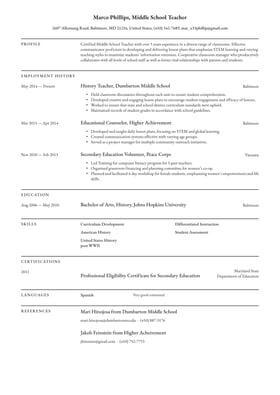The chronological resume format is the most common style used in resumes, and there are good reasons for that. See if it’s your best choice, and learn how to use it.
The chronological resume format is your first port of call when writing a professional resume. The first few moments a hiring manager looks at your resume will set their first impression. That's why it's important to identify how and when to create a chronological resume—or rather, a reverse chronological resume—in the right way. Let’s take a look at how to get it right.
Using a chronological resume to find a job
The term chronological resume is a bit of a misnomer, as this format actually puts employment history and education in reverse chronological order. That means you list your last or current job first, and your first job last.
Likewise, when using chronological order in reverse, you list your highest educational achievement first and earlier milestones below that.
The reverse chronological resume format is the one most commonly used, as it generally showcases a candidate’s most impressive experience first. If you’re a brain surgeon looking for a new position, it wouldn’t make much sense to start your employment history with your first job at McDonald’s.
The structure and format of a chronological resume
A chronological resume (or resume, as this document is known outside the U.S. and Canada) should follow this basic structure and format:
- Header. Contains your name, occupation, address, email, and phone number.
- Summary/profile. 3-4 lines at the top of the page summarizing what you do and why you’re good at it.
- Employment history. A listing of your past jobs (last job first, first job last), with bullet points on what you achieved at each one.
- Education. Your formal educational experience (highest degree first) and any certifications in your field.
- Skills. A short list of the hard and soft skills that make you good at your job.
- Optional sections. Membership in professional organizations; hobbies and interests; references
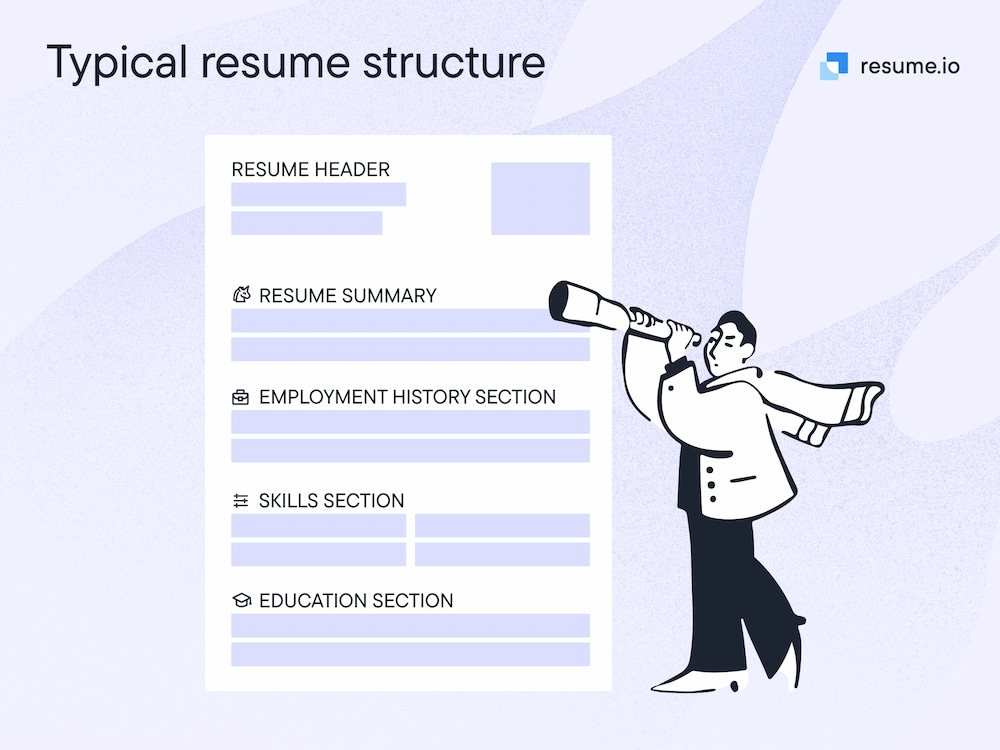
Here is how a chronological resume should look.
Chronological resume template
Looking to create a chronological resume for yourself? Check out our copyable resume template below:
Header
Your Full Name
Your Address
Your Phone Number
Your Email Address
LinkedIn Profile
Summary
Brief 3-4 line summary outlining your value
Work Experience
Most Recent Job Title
Company Name – Location
Start Date – End Date or Present
- Accomplishments as bullet points
Previous Job Title
Company Name – Location
Start Date – End Date
- Accomplishments as bullet points
Previous Job Title
Company Name – Location
Start Date – End Date
- Accomplishments as bullet points
Education
Degree or Certification
Institution Name – Location
Start Date – End Date
Skills
Bullet-point list of your top skills
Chronological resume alternatives
The primary alternative to the chronological/reverse chronological resume is the functional resume format, which focuses on your experience and skills rather than a time-based narrative of how you acquired them. The hybrid resume format uses a combination of these two approaches.
So based on these differences, who should be using a reverse chronological resume, and who shouldn't? Let's look at each case:
- Chronological resumes are best for traditional careers and people with a linear career history. For example, if you’ve worked as a teacher for 10 years.
- Functional resumes work best for career changers or professionals who are just entering the working world.
- Hybrid resumes suit professionals who have had varied experiences. The format allows you to share your experience and skills succinctly.
Most resumes are chronological, but you can also use a functional resume or hybrid. Consider your circumstances and what you want to share with a potential employer.
Why do we use reverse chronological resumes?
The short answer is that the reverse chronological resume format is what many hiring managers know and expect. As we have already discussed, the best resume format depends on your role and circumstances. However, the reverse chronological format has secured itself as the default format in a range of industries.
As a result, hiring managers can read through chronological resumes and digest the information quickly. The reverse chronological resume format is a neat way of putting the most relevant information near the top of the document. That means minimal scrolling and searching before the hiring manager can get a snapshot of what they need to know.
When to use a chronological resume
The chronological resume format is usually the best one to use if you have years of continuous experience in the field in which you’re seeking a job. This is especially true if you followed a more or less “normal” career path in which you progressed from an entry-level position to progressively more senior posts.
This format is usually used by people with a proven track record in their field, especially those who can demonstrate contributions they’ve made to their previous employers’ businesses. The emphasis is on experience, which is the main thing that employers are usually looking for in a job candidate.
|
Advantages
|
Disadvantages
|
If these disadvantages outweigh the advantages, you may want to consider using a functional or hybrid resume format.
Is a chronological or functional resume better?
The answer is that it depends on your experience. If you have a clear career path without lots of gaps and you have been with employers for 1 or more years, a chronological is the best option. However, if you've had a lot of temporary roles or gaps on your resume, you may want to consider a functional resume.
Writing the employment history section
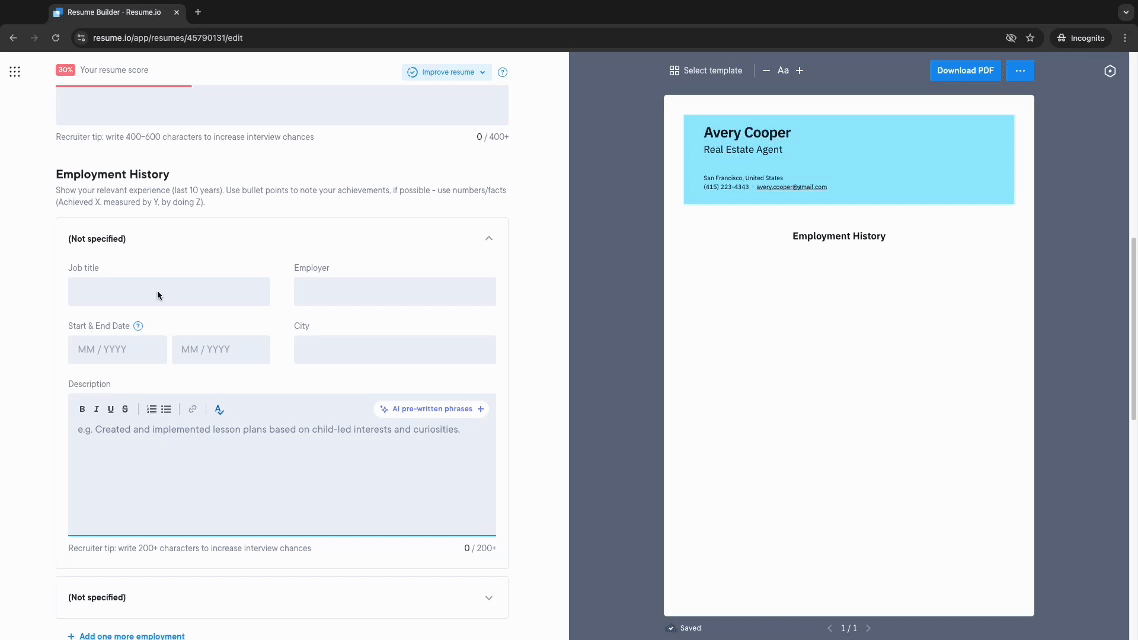
The employment history section is the main part of a resume where the reverse chronological format applies. In this section, list your current or last job first. Include the name of the company where you worked, the city, state, and/or country where it’s located, what you did there, and the years you worked there. (Precise dates are not needed.)
Under each employer, add a bullet list that describes what you did at each job. Don’t just say what you were “responsible for,” but what you actually accomplished. Be specific, using facts and figures wherever possible (dollar figures, percentage growth, number of employees you managed, number of clients you handled, etc.) Use strong action verbs: “managed,” “spearheaded,” “created,” “sold,” “organized,” etc.
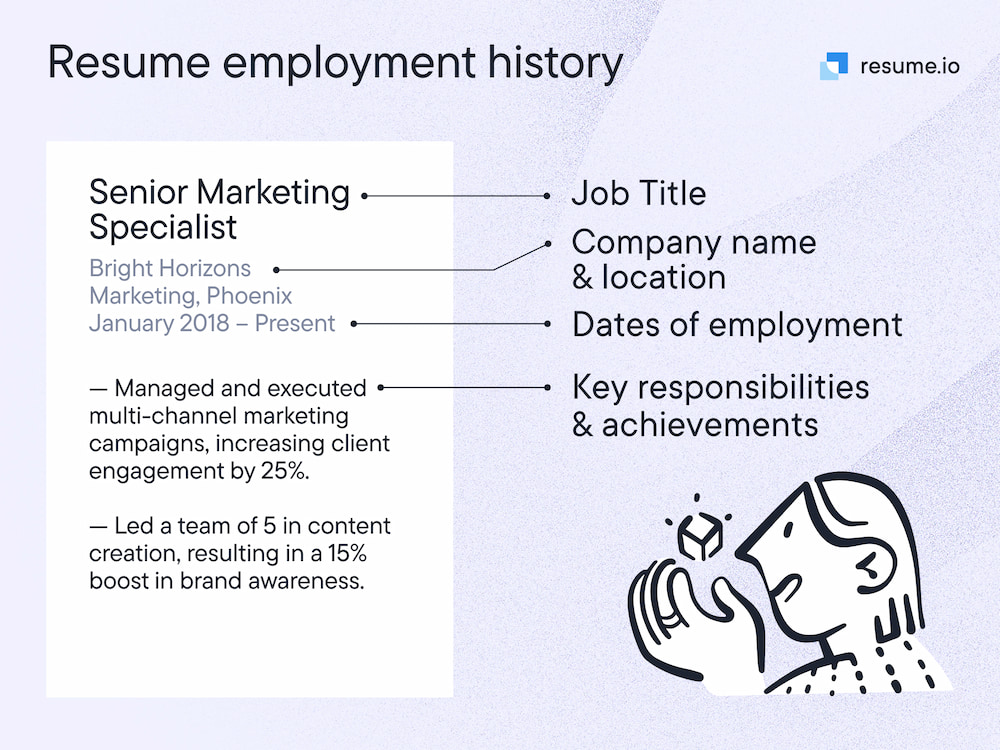
You don’t have to include every job you’ve ever had, especially if they’re unrelated to the field in which you’re seeking employment. Include your most impressive and relevant jobs.
Do employers prefer chronological or functional resumes?
Most employers prefer chronological, as it is much easier to read than a functional resume. The hiring manager can quickly see your career path. Function resumes can be a bit more of a challenge to dissect. The easier you can make it for the reader, the better!
Writing the education section
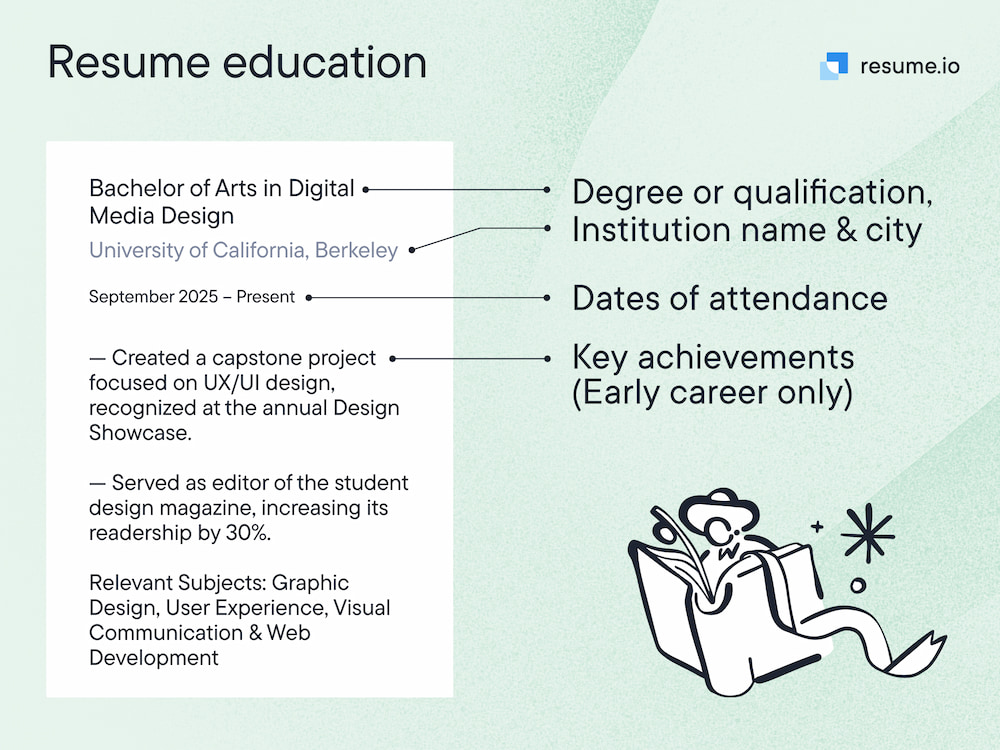
The education section is the other part of your resume where the reverse chronological order needs to be used.
For example, if you have a PhD, list that first, along with the university, the field of study, and the year you earned the degree. Follow that with the same info on where you obtained your master’s degree, and below that, do the same for your bachelor’s degree.
If you have a postsecondary degree, it’s generally not considered necessary to mention where you went to high school, although if you have room, it does not harm.
The education section can also be used to mention any certifications in your field, for example, if you are a certified nursing assistant (CNA) or a certified public accountant (CPA). Participation in job-relevant continuing education classes, seminars, and workshops can also be listed here, as well as membership in honor societies, clubs, or extracurricular activities related to your field. If you had a stellar grade point average or graduated with honors, you can also say so here.
Tips for making the most of the chronological format
By using the chronological format, you are telling a story in reverse order. This may feel a bit unnatural, but if you review some of the hundreds of resume examples at Resume.io, you’ll see that this is normal. Take a look at our tips:
- Create balance. Strive for visual balance and distribution in your resume, so that, for example, you don’t have one huge section and several tiny sections.
- Don’t use too much space. Remember that a resume/resume should almost always be one page only, so you need to be judicious about what to include. If you have extensive job experience, or if you’re highly educated, it may be impossible to list all your achievements and credentials.
- Use bullet points. Bullet lists, in particular, can take up a lot of vertical space. Consider arranging bullet lists in side-by-side columns, or simply summarizing your accomplishments in one text block (“Graduated magna cum laude; 3.8 GPA; member of Phi Beta Kappa honor society”).
- Get rid of “widows”. If you’re still having trouble fitting everything onto one page, avoid resorting to formatting tricks like using a tiny font size or making the margins too small. Look for “widows” on your page, which is where one or two words spill onto a second line, making your resume one line longer. Thoughtful trims can usually eliminate these space-eaters.
If you experiment with different resume templates, you may also find that simply choosing a different template will make your resume fit onto one page.
Chronological resume examples
Before you get started on your resume, you may be looking for some creative inspiration. Let’s take a look at some of the chronological resume examples you can use:
Nurse resume example
Student resume example
Accountant resume example
Teacher resume example
City manager resume example
Retail manager resume example
Account executive resume example
Key takeaways
If you have years of continuous work experience in the field or industry in which you’re seeking employment, then the reverse chronological resume format is probably the right one for you. This will focus on your experience while also detailing your skills and education.
First, assess whether the reverse chronological format is right for you. Respect the structure. This is what hiring managers in many industries know and expect. Your most recent and relevant roles and qualifications must follow reverse chronological order in the employment history and education sections. Employ some of our formatting tips to make the format flow.
There is a wealth of resources available to you when you embark on writing a resume. These will provide you with examples and templates to get you started. You then just need to add the specifics about your professional background.





